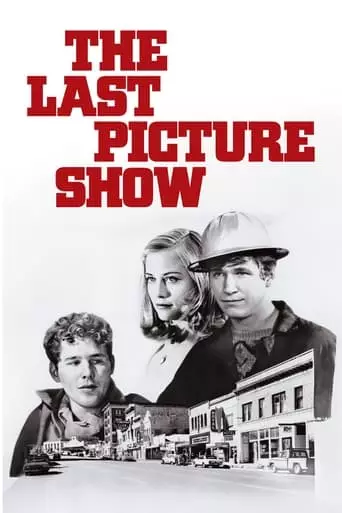
The Last Picture Show (1971) Watch Online Free
High school seniors and best friends, Sonny and Duane, live in a dying Texas town. The handsome Duane is dating a local beauty, while Sonny is having an affair with the coach’s wife. As graduation nears and both boys contemplate their futures, Duane eyes the army and Sonny takes over a local business. Each struggles to figure out if he can escape this dead-end town and build a better life somewhere else.
The Last Picture Show (1971), directed by Peter Bogdanovich, is a poignant coming-of-age drama set in a small Texas town during the early 1950s. The film explores the lives of high school seniors Sonny Crawford and Duane Jackson, played by Timothy Bottoms and Jeff Bridges, respectively. As they navigate the complexities of adolescence, they become entangled in a web of love, loss, and personal disillusionment.
The film is set against the backdrop of a dying town, Anarene, where the local movie theater, owned by Sam the Lion (Ben Johnson), serves as a metaphor for the fading dreams and opportunities of its residents. Sonny and Duane’s lives are marked by their relationships with Jacy Farrow (Cybill Shepherd), the town’s beautiful but manipulative girl, and Ruth Popper (Cloris Leachman), a lonely older woman with whom Sonny has an affair. As the characters confront the inevitability of change and the harsh realities of life, the film paints a bittersweet portrait of youth and the passage of time.
At its core, “The Last Picture Show” is about the painful process of growing up and the inevitable loss of innocence. The film explores themes of isolation, unfulfilled desires, and the search for meaning in a world that offers little. The town of Anarene symbolizes a place where dreams go to die, and the characters’ struggles reflect a larger commentary on the American experience in the post-war era.
The film also delves into the complexities of human relationships. Sonny’s relationships with Jacy and Ruth highlight the tension between youthful idealism and the harshness of adult reality. Jacy’s manipulations and Sonny’s longing for something more than his small-town existence illustrate the emotional turmoil of adolescence. Meanwhile, Ruth’s affair with Sonny reveals the loneliness and desperation of adults trapped in unsatisfying lives.
The cinematography, in stark black-and-white, mirrors the bleakness of the town and its people, enhancing the film’s somber tone. The use of real locations and period-specific details further immerses the viewer in the world of 1951, giving the film an authentic, almost nostalgic feel. As Roger Ebert notes, the film not only evokes the visual style of 1950s cinema but also captures the emotional essence of a bygone era
After watching The Last Picture Show, you will likely experience a mixture of sadness, nostalgia, and reflection. The film’s emotional weight lingers long after the credits roll, leaving you to contemplate the fleeting nature of youth and the inevitability of change. Its raw portrayal of the human condition, particularly the pain of unrequited love and the loss of innocence, may evoke a deep sense of empathy and introspection.
The film’s bittersweet ending, with Sonny’s quiet reconciliation and the closing of the movie theater, is both melancholic and hopeful, suggesting that while life moves on, the past remains an indelible part of who we are. You might feel a sense of loss for the characters, but also a recognition of the universal truths the film conveys about the passage of time and the complexities of growing up.
In the end, “The Last Picture Show” is a film that stays with you, making you reflect on your own experiences and relationships. It invites you to embrace the beauty and pain of life’s transitions, offering a poignant reminder of the fleeting nature of time.
